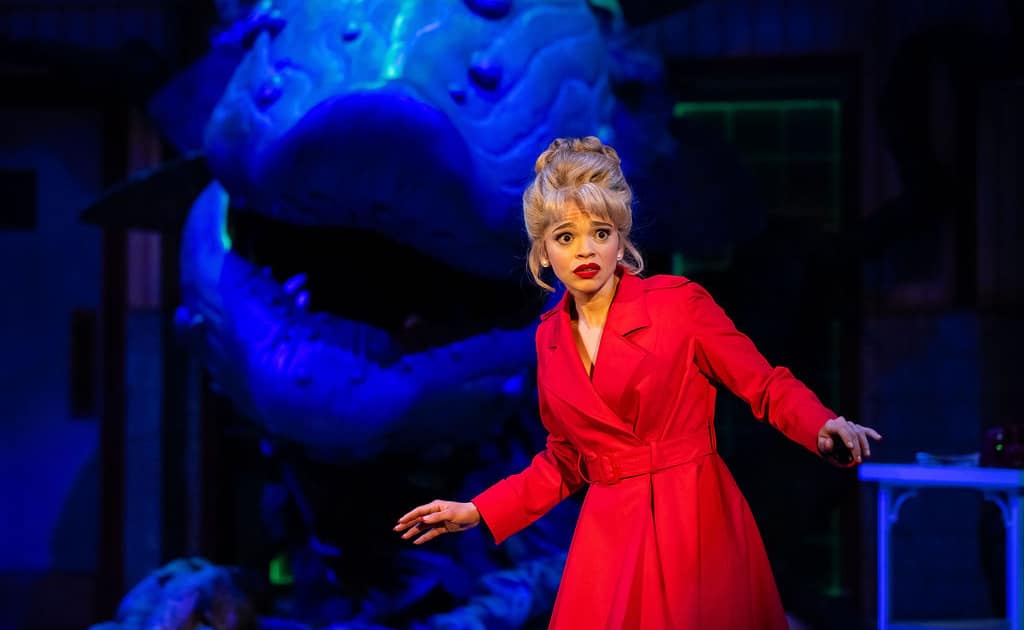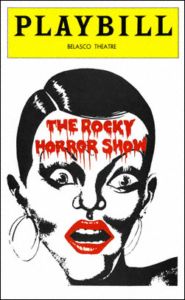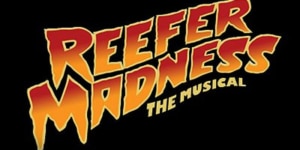DCPA NEWS CENTER
Enjoy the best stories and perspectives from the theatre world today.
Enjoy the best stories and perspectives from the theatre world today.
Horror comedies are like Hawaiian pizza: they combine two elements that, on paper, should never work together. Ham and pineapple seem destined to clash, but there’s something about the pizza format that turns the meat-fruit combo into something greater than the sum of its parts. The same goes for the onstage horror comedy; except in this case, the secret ingredient isn’t tomato sauce or mozzarella—it’s music.
Music is the ultimate mood mixer-upper. When done properly, a song’s lyrics and instrumentals can work toward opposite ends while still creating a cohesive whole; that’s how we get ’80s bops about nuclear war and indie-pop earworms about school violence. Feeling better after listening to sad music is such a common human experience that it has even been the subject of neuroscience research. Within the horror comedy genre, music provides the tonal alchemy needed to turn laughs into screams and vice versa. And as the following three musicals demonstrate, if your goal is to elevate the final dish to cult-classic status, it never hurts to add a sprinkle (or a handful) of B-movie camp.

Gizel Jiménez in Little Shop of Horrors. Photo by Jamie Kraus Photography.
When it debuted off-off-Broadway in 1982, the story of America’s most blood-soaked flower shop made two notable improvements over its black-and-white film predecessor. First, it dropped the The from its title. Second, it added music—much of it in the styles of doo-wop and Motown. When the carnivorous plant Audrey II finally finds its singing voice, it does so through jazz and R&B, lending a soulful touch to the show’s ever-climbing body count. And while man-eating flora from outer space may not keep most people up at night, more than a third of the U.S. population does have a very real fear of dental treatment. In light of this, the audience’s ability to laugh and sing along with the sadistic dentist Orin may be Little Shop’s greatest musical achievement.

Just as no Halloween playlist is complete without the “Time Warp,” no survey of the horror comedy musical genre is complete without The Rocky Horror Show. Starring Tim Curry as the cross-dressing mad scientist Dr. Frank-N-Furter, the show debuted on London stages in 1973. Two years later, the show’s movie adaptation, The Rocky Horror Picture Show, secured Dr. Frank-N-Furter and his fellow Transylvanians’ place in the cult-classic pantheon. The show’s distinctive costuming—fishnet stockings and glitter abound—are integral to its use of glam rock, a genre that has been described as “a Camp attack on rock and roll.” In the original Broadway run (as well as the movie adaptation), that attack on rock and roll is rendered literal through Dr. Frank-N-Furter’s grisly murder of the biker Eddie—played in both versions by none other than the late American rock musician Meat Loaf.

Complete with zombies, a satanic goat-man, and Franklin Delano Roosevelt, Reefer Madness is like a high school D.A.R.E. lecture on drugs. The musical satire first appeared onstage in 1998, more than half a century after the release of the anti-marijuana film variously known as Doped Youth, Tell Your Children, and—most famously—Reefer Madness. In depicting the slippery slope from smoking (“Jimmy Takes a Hit”) to cannibalism (“Murder!”), the musical version of Reefer Madness puts a horror-comedy spin on what it means to get the munchies. Along the way, the show sends up the societal anxiety that has long surrounded marijuana, a drug that has achieved full legality in 24 states since the musical first premiered.
